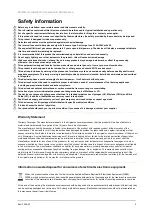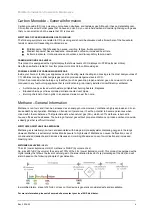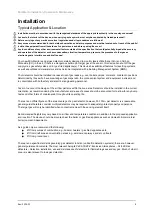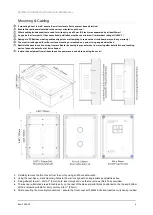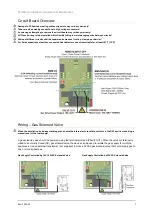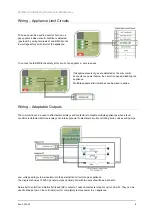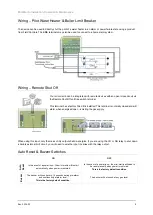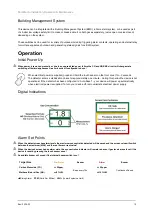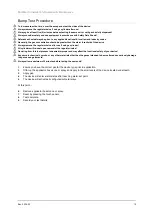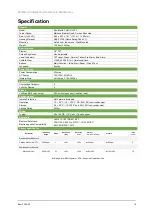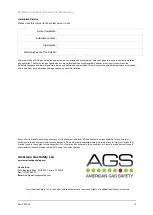
Mini Merlin Installation, Operation & Maintenance
Rev: 03 05-22
4
Carbon Monoxide
–
General Information
Carbon monoxide (CO) is a poisonous, colourless, odourless, and tasteless gas. Although it has no detectable odor,
CO is often mixed with other gases that do have an odor. So, you can inhale carbon monoxide right along with gases
that you can smell and not be aware that CO is present.
SYMPTOMS OF CARBON MONOXIDE GAS POISONING
The following symptoms are related to CO poisoning and should be discussed with all members of the household,
facility or person(s) frequenting monitored areas.
•
Mild Exposure: Slight headache, nausea, vomiting, fatigue, flu-like symptoms.
•
Medium Exposure: Severe headache, drowsiness, confusion, increased heart rate.
•
Extreme Exposure: Unconsciousness, convulsions, cardio-respiratory failure, death.
CARBON MONOXIDE GAS LEVELS
This product is equipped with a digital display that shows levels of CO displayed in PPM (parts per million).
See the specification table for how this product monitors Carbon Monoxide gas.
POSSIBLE SOURCES OF CARBON MONOXIDE GAS
Inside your home or facility, gas appliances used for heating, water heating and cooking are the most likely sources of
CO. Vehicles running in attached garages can also produce dangerous levels of CO.
CO can be produced when burning any fossil fuel, such as gasoline, propane, natural gas, oil and wood. It can be
produced in any fuel burning appliance that is malfunctioning, improperly installed or insufficiently ventilated.
•
Automobiles, gas stoves, water heaters, portable fuel burning heaters, fireplaces.
•
Blocked chimneys or flues corroded or disconnected vent pipes.
•
Burning charcoal or fuel in grills in an enclosed area or near the home.
Methane
–
General Information
Methane is non-toxic and it can be harnessed as an energy source. However, methane is highly explosive and it can
cause death by asphyxiation. Methane on its own isn't poisonous, it has the potential to become poisonous when
mixed with other substances. That potential exists when natural gas (CH
4
), which is 97% methane, is burned in
houses, offices and businesses. The burning of natural gas without proper ventilation can produce carbon monoxide,
a deadly gas that is difficult to detect.
SYMPTOMS OF METHANE GAS EXPOSURE
Methane gas is relatively non-toxic and associated with being a simple asphyxiator displacing oxygen in the lungs.
However, Methane is extremely combustible. Exposure to high levels of Methane can cause: Suffocation; Loss of
consciousness; Headache and dizziness; Nausea and vomiting; Weakness; Loss of co-ordination and increased
breathing rate.
METHANE GAS LEVELS - LEL%
The LEL (Lower Explosive Limit) of methane is 5% BV (by volume of air).
So, we call 5% BV (by volume) the same as 100% of the LEL (Lower Explosion Limit). This product is equipped with a
digital display that shows the level of natural gas in the area referred to as LEL% (a percentage of the LEL) and will
alarm based on the following principle of gas detection.
In simplified terms, a level of 8% LEL or less on this device is generally considered safe and acceptable.
For more information, please visit our website or contact your local AGS distributor.



